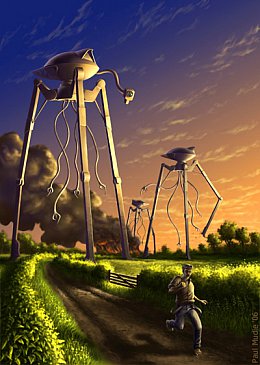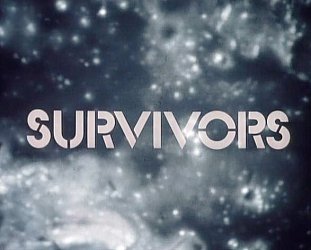Graham Reid | | 2 min read

At midday on March 12, 1913 in Columbus, Ohio someone broke into a run down the main street. By coincidence a few other people happened to be running in the same direction. Within 10 minutes everybody was running.
Someone heard the word "dam" and panic spread: the dam had burst.
Run!
According to James Thurber's book My Life and Hard Times, thousands joined in the stampede and some ran as far as Reynoldsburg about 80km away.
History is littered with such panics, stampedes and mob behaviour. The crowd has a mind of its own, and that mind will often fly in the face of logic.
If the dam had burst near Columbus the streets would have been awash before anyone could even break stride.
On the night of Sunday October 30, 1938 -- the eve of Halloween -- when Orson Welles and his radio theatre company began their broadcast of an adaptation of H.G. Wells' classic War of the Worlds, no one could have predicted what mayhem might ensure when so many people took the broadcast of an invasion from Mars seriously.
But in hindsight -- as this documentary shows -- all the elements were in place.
Citizens of America had been primed by radio (which would frequently interrupt programmes with breaking news) for disasters and unease: there had been the stock market crash, the Hindenberg disaster, the kidnapping of the Lindberg baby and, most worrying of all, Hitler's rise in Germany.
America was a nation of people for whom fear and uncertainty were now common currency. Not for nothing had President Roosevelt said, "We have nothing to fear bur fear itself."
But fear was enough.
Most people listening to radio that night after dinner hadn't tuned in to hear the Mercury Theatre broadcast but were on another channel listening to the ventriloquist Ed Bergen and Charlie McCarthy (a ventriloquist on radio? Go figure) and so missed the introduction which made clear it was radio play.
When a musical interlude came on they switched channels and caught Welles' brilliant broadcast -- in which he adapted a script by John Houseman to use the tropes of radio like live crosses and breaking new bulletins -- and heard Martians had not only invaded but were killing US troops and lining up to invade New York.
Welles employed a stunning use of silence at one point which simply enhanced the effect. And those who didn't get "martians" just heard "invasion" and assumed Hitler's Nazis had arrived.
Through period footage, clips from old movies, actors speaking the actual lines which concerned citizens said in the aftermath, this hour-long doco -- on Sky Arts, Thursday October 31, 8.30pm -- takes you back to that time.
And while, with the distance we enjoy, we may laugh at the gullibility of people in those days, when all those elements are put in place, who is to say the same wouldnt happen again?
Indeed, if you read your newspaper -- especially the world section with its reports from India ( an incident a fortnight ago in which at least 90 were killed), Pakistan or during the Hajj in Mecca -- you may find some depressing similarities.
Fear can mean individuals lose their identity and become caught up in a mob mentality. And then -- as Beatlemania and Biebermania will attest -- anything goes.





Kathy Watson - Oct 29, 2013
The music is from the 80's remake is still one of the best LP's around. I still play it and it sends shivers..
Savepost a comment